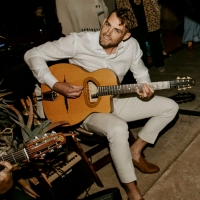DjangoBooks.com
Welcome to our Community!
Categories
- 20K All Categories
- 1.1K General
- 476 Welcome
- 59 Archtop Eddy's Corner
- 146 CD, DVD, and Concert Reviews
- 385 FAQ
- 26 Gypsy Jazz Italia
- 27 Photos
- 202 Gypsy Picking
- 21 Unaccompanied Django
- 15 Pearl Django Play-Along Vol.1
- 17 Gypsy Fire
- 45 Gypsy Rhythm
- 1.4K Gypsy Jazz University - Get Educated
- 131 Gypsy Jazz 101
- 227 Repertoire
- 218 History
- 708 Technique
- 51 Licks and Patterns
- 6 Daniel Givone Manouche Guitare Method Users Group
- 20 Eddie Lang Club
- 1.3K Gypsy Jazz Gear
- 802 Guitars, Strings, Picks, Amps, Pickups and Other Accessories
- 459 Classifieds
- 49 Recording
- 62 Other Instruments
- 18 Violin
- 5 Mandolin
- 22 Accordion
- 7 Bass
- 10 Woodwinds
- 347 Gypsy Jazz Events
- 143 North America
- 109 Europe
- 95 International










Comments
In order to discuss it though, we need to have the theory piece....and that leads to another old AHA moment. When I first listened to Django as a teenager I loved the way he moved the bass and melodic lines through the chords when he was playing chordal stuff. That was the first time it all started making sense.
yeah I saw it already, I was hoping for more of a confirmation or refutation as to whether that is actually correct !
I was looking on youtube, and it's hard to tell, but it does seem to be true. And interestingly he seem to do a similar thing in other places, not just for the diminshed arpeggios. I thought I could see this in stochelo/romane double jeu. Or here http://www.soundslice.com/yt/UcjkBDqQ7IQ/ at about 6 minutes , there's the big diminshed run at the end of this song. I t looks like he use all sweep/downstroke except for the 3 notes on the last string , but it's hard to see even at 0.5x speed because the audio and video is not synced perfectly.
I could be wrong about my assertion. Some of the ascending runs are tabbed out that way in the downloadable music from the Rosenberg academy - with a quick down stroke (not rest) followed by sequential 2 note sweeps. I would say that Hemert or Dennis could probably say for sure. I think Angelo Debarre does this on the last A7 ascending run in the B section of "La manouche". It's at 1:20 or so.
Realising that using my left hand pinky was making/allowing me to play more linearly and fall back on my jazz playing, which was not the sound I was after, and how important technique and existing or imposed physical limitations are in determining the kinds of things I choose to play (almost as important as mind/ear).
Realising that Tchavolo plays with the knuckles of his right hand spread out, and that this helps disproportionately hugely with picking precision using a floating hand.